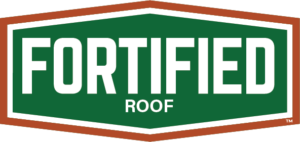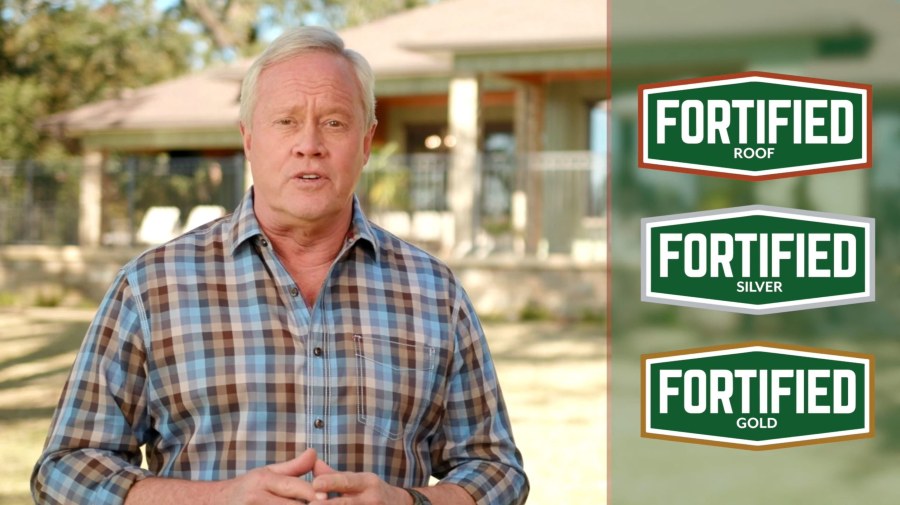
Fortified Roofing
When it comes to protecting your home from extreme weather, Fortified Roofing delivers peace of mind you can count on. Designed and tested to meet the highest standards of resilience, Fortified roofs are built to withstand hurricanes, high winds, hail, and heavy rain. Backed by rigorous engineering and certification, this advanced roofing system not only helps prevent costly storm damage but may also qualify homeowners for insurance discounts.

Built to Withstand the Storm: Fortified Roofing Systems
As of June 2025 , were proud to be certified Fortified High Wind & Hail roofing providers in the State of Illinois. Our team has undergone rigorous training and passed official certification exams to meet the stringent Fortified standards.
This elite status means we're uniquely qualified to install roofing systems built to withstand severe storms - giving you unmatched peace of mind and potential savings through insurance incentives.
Elite Certification: Fortified-certified contractors in Illinois for high wind and hail protection.
Stronger, Safer Roofs: Fortified systems are engineered to reduce storm damage and may qualify for insurance discounts.
- house
STRONGER EDGES
Roof damage often begins when wind gets underneath the roof edge and begins ripping it away from the home. To help protect this vulnerable area, FORTIFIED requires specific materials and installation methods, including a wider drip edge and afully adheredstarter strip,that when used together create a stronger system.
- house
SEALED ROOF DECK
If wind rips off your roof coveringsuch as shingles, metal panels or tilesit exposes the wood beneath and allows water to pass through the gaps and enter your home. FORTIFIED requires roof decks to be sealed to prevent this type of water damage.
- house
BETTER ATTACHMENT
Instead of common smooth nails, FORTIFIED requires ring-shank nails, installed in an enhanced pattern, to help keep the roof deck attached to your home in high winds. In fact, using ring-shank nails nearly doubles the strength of your roof against the forces of winds.
- house
IMPACT-RESISTANT SHINGLES
In hail-prone areas, homeowners are encouraged to opt for the Hail Supplement to their FORTIFIED designation. To achieve this added level of protection, shingles must score Good or Excellent on the IBHS Hail Impact Ratings. These outperform typical Class 4 shingles when tested against realistic hailstones and will better protect your home from hail up to 2 in diameter.
Your roof is your home's first line of defense against severe weather, and if it fails, water can pour in causing severe damage throughout. That's why the three steps to protecting it are included in every FORTIFIED home.
The National Standard for Resilience | |||
|---|---|---|---|
| Enhanced Roof Deck Attachment When severe weather hits, keeping your roof deck attached to your home is key to blocking storm pressure and rain from entering your home. IBHS testing shows that switching from common smooth nails to 8D ring-shank nails and decreasing the space between nails, can double the uplift your roof can withstand. | check | check | check |
| Sealed Roof Deck If wind rips off your roof covering (like shingles, metal panels or tiles), it exposes the wood beneath and allows water to pass through the gaps and enter your home. IBHS testing shows that for every inch of rain to hit an exposed roof deck, the equivalent of nine bathtubs of water can pour in and cause significant interior damage. By sealing the seams of your roof deck, you can reduce that water-intrusion by up to 95%! | check | check | check |
| Locked Down Roof Edges Roof damage often begins when wind gets underneath the roof edge and begins ripping it away from the home. To help protect this vulnerable area, FORTIFIED requires specific materials and installation methods, including a wider drip edge and afully adheredstarter strip,that when used together create a stronger edge system. | check | check | check |
| Impact-resistant Shingles Rated by IBHS** In hail-prone areas, FORTIFIED requires shingles tested by IBHSto show they can withstand hail up to 2 inches in diameter. These shingles outperform typical Class 4 shingles when tested against realistic hailstones and will better protect your home. | check | check | check |
| Wind and Rain-Resistant Attic Vents During severe-weather events, high winds can pull typical attic vents loose, giving the storm a pathway into your home. Even when it doesn't pull vents loose, wind can drive rain almost sideways, allowing it to enter your home through vents that are not designed to prevent it. To keep this from happening, FORTIFIED requires attic vents that are wind and rain resistant. | check | check | check |
| Impact Protection for Windows & Doors* When rain and storm pressures penetrate a home, damage quickly escalates. That why it is so important to defend openings like doors and windows. FORTIFIED requires window and door protection that is tested to withstand both pressure and impact. | check | check | |
| Impact* & Pressure-Rated Garage Doors Keeping winds and pressure from entering your home is critical for its survival in a storm. Both can easily come through a failed garage door, and once this happens, it's common to see blown-out walls and collapsed roofs. FORTIFIED prevents this scenario by requiring garage doors rated to withstand high pressures, and in hurricane-prone areas, garage doors with windows to be rated to withstand impact from windborne debris. | check | check | |
| Chimney Bracing High winds can tear chimney framing off the roof of the home, leaving a hole in the roof and allowing rain to easily enter, which typically leads to significant interior damage. FORTIFIED requires chimneys to be anchored to the home to help spread the load and prevent tear-offs. | check | check | |
| Reinforced Soffits* IBHS testing shows that when wind drives rain almost sideways, it can actually be blown up under your roof overhangs. Your soffits should prevent that water from sneaking into your attic, but in typically-built homes, soffits are often hung with inadequate support. This allows them to be easily blown and gives wind-driven rain easy access to your home. FORTIFIED requires extra bracing and some additional fasteners to keep the soffit in place. | check | check | |
| Anchored Attached Structures High winds can flow under the roof of a carport or porch, and if the structure is not properly anchored, it can not only lift up like a kiteit can take part of your house with it. FORTIFIED requires strong anchors and proper connections to prevent this type of damage. | check | check | |
| Gable End Bracing Post-disaster studies show that unbraced gable ends are a critical weak link for homes attacked by high winds. By requiring additional bracing, FORTIFIED stops wind from collapsing this section of a home. | check | check | |
| Pressure-rated Windows & Doors* When severe weather strikes, keeping the storm pressure out is absolutely imperative. One of the easiest ways for it to barge into your home is through doors and windows. Once inside, storm pressure pushes outward on your walls and roof and can cause catastrophic damage to the structure of your home. Fortunately, you can defend against this by using windows and doors that are properly rated for the weather you face. | check | ||
| Stronger Exterior Sheathing* No matter what direction the wind is coming from, your walls will take the brunt of it. If they fail, wind and rain will ravage your home. This is why FORTIFIED requires thicker, impact resistant structural sheathing that can resist flying debris. | check | ||
| Engineered Roof-to-Wall Connections Storm after storm, we see homes completely leveled. FORTIFIED reduces the risk of this happening to your home by requiring a continuous load path, which means your roof-to-wall, story-to-story, and wall-to-foundation connections are engineered to withstand the wind and pressure your home is likely to face in a severe storm. Creating a singular, solid structure is the key to keeping the roof on and the home in place when high winds or hurricanes threaten. | check | ||
| Engineered Story-to-Story Connections Storm after storm, we see homes completely leveled. FORTIFIED reduces the risk of this happening to your home by requiring a continuous load path, which means your roof-to-wall, story-to-story, and wall-to-foundation connections are engineered to withstand the wind and pressure your home is likely to face in a severe storm. Creating a singular, solid structure is the key to keeping the roof on and the home in place when high winds or hurricanes threaten. | check | ||
| Engineered Wall-to-Foundation Connections Storm after storm, we see homes completely leveled. FORTIFIED reduces the risk of this happening to your home by requiring a continuous load path, which means your roof-to-wall, story-to-story, and wall-to-foundation connections are engineered to withstand the wind and pressure your home is likely to face in a severe storm. Creating a singular, solid structure is the key to keeping the roof on and the home in place when high winds or hurricanes threaten. | check |
